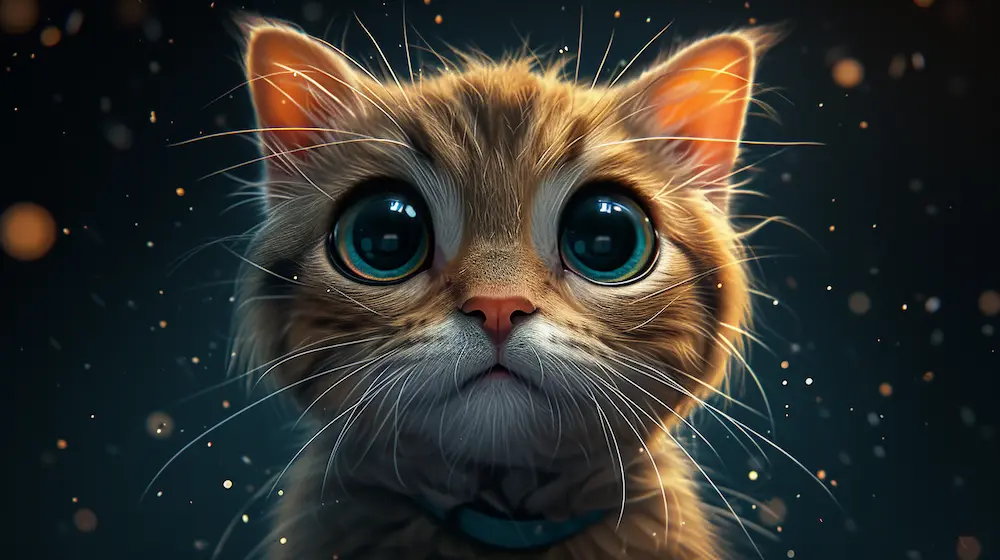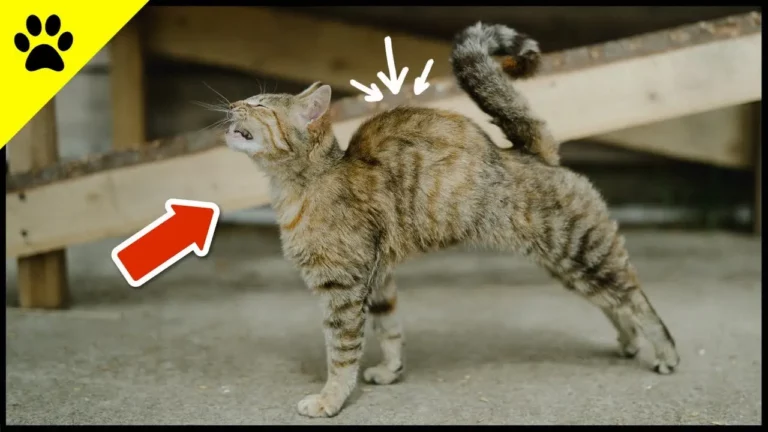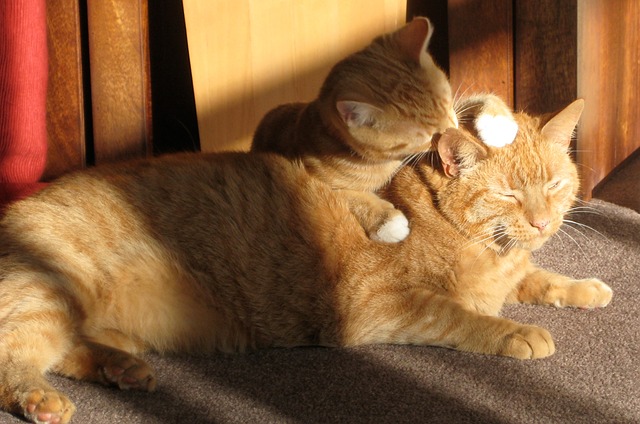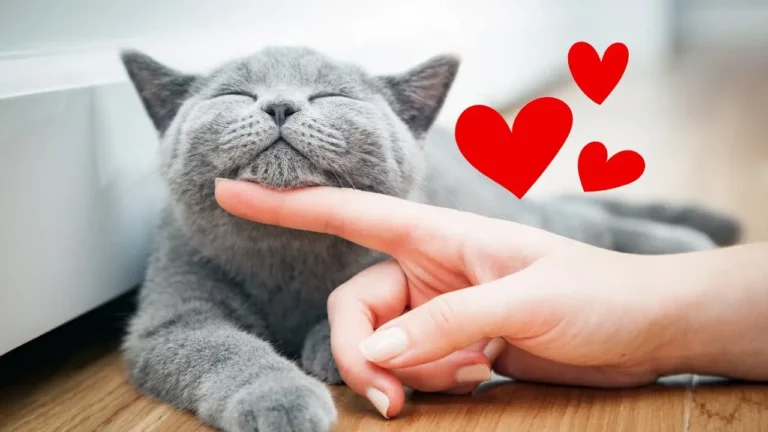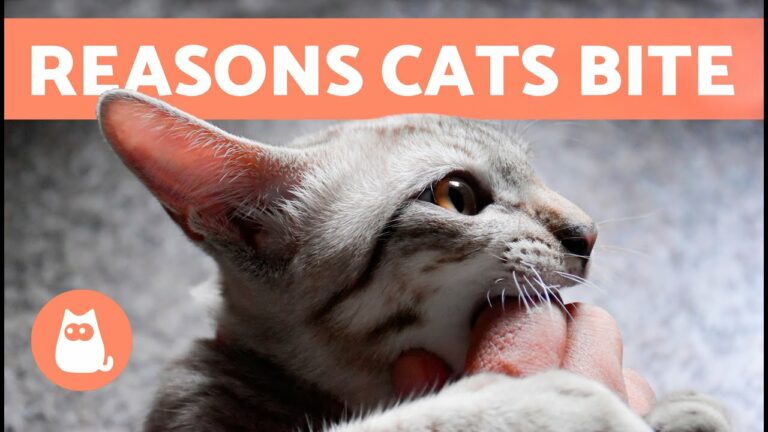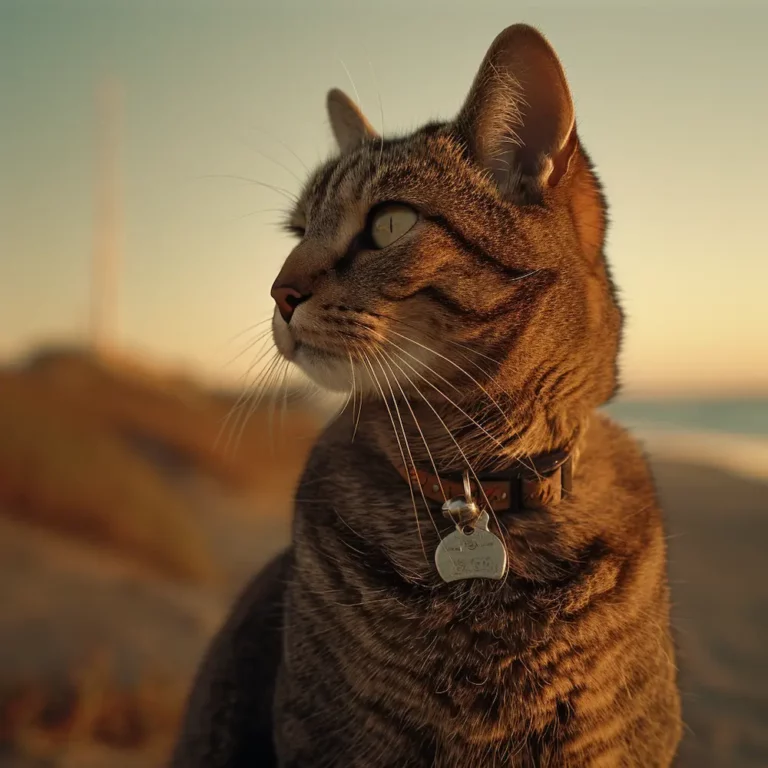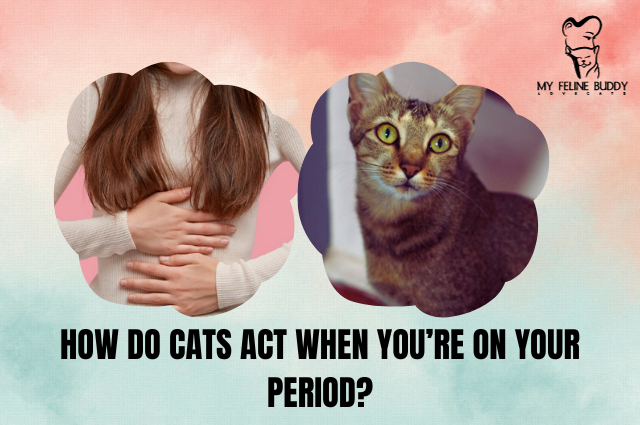Are Cats Losing Popularity? Here’s What Numbers Are Saying!
Have you ever wondered if our feline friends are losing their charm among pet lovers?
It’s a question that might seem odd at first glance, considering the countless videos and pictures of cats that dominate our social media feeds.
Yet, behind the adorable content, there’s a discussion worth having about the popularity of cats in our homes and hearts.
I stumbled upon some intriguing statistics and stories that paint a complex picture of our relationship with these independent and often mysterious creatures.
This article aims to explore the shifting sands of
Whether you’re a
Examining the Shift in Pet Popularity Trends
The Rise and Fall of Cat Favoritism
In exploring the dynamic world of pet popularity, I’ve come across compelling evidence indicating a shift in our affection towards cats.
At one time, these enigmatic creatures enjoyed unwavering favoritism in households across the globe.
Yet, recent data signals a change that’s worth delving into.
Initially, cats captured our hearts and homes with their independence, low-maintenance lifestyle, and viral-worthy antics.
Their ability to navigate urban environments with finesse made them ideal companions for apartment dwellers.
Besides, the digital age catapulted cats into the spotlight with an unending stream of memes and videos.
Who could forget the charm of Grumpy
But, a closer look at registration data and adoption trends indicates a gradual yet noticeable decline in their rank as the preferred pet.
For instance, the popularity of the Tonkinese and Oriental breeds has significantly diminished.
In 2004, the Tonkinese was the 10th most popular breed registered with the
Similarly, the Oriental, once the 8th most favored in 2004, slid to 13th place a decade later.
So, what’s driving this trend?
It appears that several factors are at play.
One explanation is the increasing urbanization and the hectic pace of modern living.
People are seeking pets that are not only companions but also fit seamlessly into their busy lives.
Dogs, with their ability to be trained for various tasks, including emotional support and security, are becoming more attractive to today’s pet owner.
Also, societal shifts towards outdoor and active lifestyles also favor dogs, which can participate in activities such as hiking, running, and camping—experiences that are challenging to share with a
Also, the rise in pet-friendly workplaces has contributed to this trend, as dogs are more commonly accepted in such environments compared to cats.
Cat Ownership Trends Over the Years
Statistical Analysis: Cat vs. Dog Ownership
Diving into the current state of pet ownership, it’s clear that trends have evolved significantly over time.
But, to truly understand these changes, we must look closely at the numbers.
Firstly, it’s important to note that the comparison between
Numerous factors play into these trends, such as living arrangements, work schedules, and lifestyle preferences.
For instance, densely populated urban areas with smaller living spaces might favor
On the other hand, suburban or rural settings—with more room to roam—often see higher dog ownership rates.
Looking at the statistics, there appears to be a nuanced shift.
For example, in the early 2000s, cats were riding a wave of viral popularity, thanks to the internet culture that adored them for their quirky antics.
This popularity saw a surge in
But, recent data suggests a decline in
The American Pet Products Association (APPA) noted in its 2019-2020 report that dogs are present in 63% of American households, outnumbering cats present in 42%.
This discrepancy highlights a significant trend toward dog ownership, possibly attributed to their versatility in roles such as service animals, therapeutic support pets, and companions for outdoor activities—all increasingly valued in today’s world.
Another perspective comes from the dynamics of modern life.
As our lives become busier and more people opt for compact city living, one might assume cats would become more popular.
Yet, the increased desire for active companionship has led many to choose dogs, which often require more time and energy but provide a different kind of interactive relationship.
Also, the explosion of dog-friendly establishments and parks has further encouraged dog ownership.
Cities are now more accommodating to dogs than ever before, allowing people to take their canine friends almost everywhere—from cafes to offices.
This societal shift has played a crucial role in tilting the balance towards dogs.
Nevertheless, it’s crucial not to overlook the steadfast appeal of cats.
They remain a top choice for those who appreciate the less demanding, albeit deeply loyal, companionship they offer.
Their viral status hasn’t waned entirely either, with social media still celebrating their unique personalities.
Factors Influencing Cat Popularity
Lifestyle Changes and Pet Owners’ Preferences
In examining the factors that influence
As our lives evolve, so do our desires and abilities to care for pets.
For instance, urbanization has led to more people living in apartments where dogs may not be feasible due to their size, noise, or the need for frequent outdoor walks.
But, cats, with their relatively quieter demeanor and lower maintenance needs, should theoretically thrive in this environment.
Yet, there’s a twist.
Busier lifestyles also mean pet owners are increasingly looking for companions that can adapt to being alone for longer periods.
Cats excel in this regard, being more independent by nature.
But people’s desire for more interactive pets has risen.
Dogs, with their ability to accompany their owners on outdoor activities, fulfill this need better than their
As an example, a jogger might prefer the company of a dog over a
Hence, even though cats being suitable for contemporary living spaces, the yearning for a more engaging pet experience leads some to favor dogs.
Also, the shift towards remote working could have bolstered the companionship aspect of pet ownership, with dogs often perceived as more interactive and emotionally responsive during the day.
This perception challenges cats’ status, even though many
So, it’s not just about the pet fitting into our lifestyle, but also about what we seek in a pet’s companionship during our daily routines.
The Impact of Social Media on Pet Popularity
Social media has undeniably reshaped the world of pet popularity, acting as a double-edged sword. On one hand, cats have massively benefited from the viral nature of their antics; anyone who’s laughed at a
Grumpy
But, as the digital wave continues to crescendo, the nuances of what makes content engaging have also evolved.
Dogs’ versatile roles in homes, ranging from service animals to companions in adventures, generate a wide array of engaging content.
From clips of dogs surfing to heartwarming stories of service dogs transforming lives, the content surrounding dogs is diverse, appealing to a broad audience and so enhancing their popularity.
Besides, social media platforms are now saturated with pet content, making it harder for any one
It creates a scenario where cats, even though their internet fame, compete in a much larger arena for attention.
It’s not just about being cute or funny; it’s about catching and holding the viewer’s attention in an ever-scrolling feed.
Hence, while cats continue to be a staple of internet culture, the shifting dynamics of social media content consumption demand more than just viral videos to sustain their popularity.
Regional Variations in Pet Popularity
When delving into the heart of pet popularity, it’s clear that preferences aren’t uniform across the board – geography plays a pivotal role.
So, let’s explore what’s happening around the globe.
Hotspots for Cat Lovers
First, let’s talk about the
Tokyo, Japan, is a haven for feline aficionados, thanks to its numerous
Tokyo’s fascination with cats doesn’t end here; the city also hosts
Similarly, Istanbul, Turkey, is renowned for its street cats, which are cherished by the locals.
The cats freely wander the city, receiving strokes and treats from the friendly residents and tourists alike.
These cities embody the spirit of
For someone seeking to immerse in a culture that celebrates cats, visiting these cities offers a unique insight into how deeply animals can be integrated into the fabric of urban life.
Besides, cities like Rome and Saint Petersburg also exhibit a high regard for cats, providing sanctuaries and laws to protect and honor them.
Areas Where Dogs Reign Supreme
Contrastingly, there are areas where dogs take the spotlight.
Take Denver, Colorado, for example.
It is a paradise for dog lovers with its dog-friendly parks, cafes, and even breweries.
Outdoor activities reign supreme here, and given the city’s proximity to mountains and trails, it’s easy to see why dogs are the preferred companions for adventurous outings.
Similarly, in Portland, Oregon, dogs are virtually a part of every outdoor activity.
From hiking in the lush landscapes to kayaking on the serene waters, dogs are welcomed participants.
Another example is Buenos Aires, Argentina, known for its dog walkers who navigate the bustling streets with packs of dogs, reflecting the city’s love for these loyal creatures.
These examples illustrate how the demands of lifestyle and the availability of outdoor spaces can sway pet preferences towards dogs.
Hence, while cats may face challenges in maintaining their popularity in a rapidly changing world, regional variations highlight that they continue to be cherished in many cultures.
On the flip side, dogs thrive in areas where their need for space and activity matches the lifestyle of the inhabitants.
As a pet lover, recognizing these dynamics can enhance our understanding of the relationship humans have with their animal companions, eventually fostering a deeper appreciation for both cats and dogs, irrespective of the prevailing trends.
Challenges Facing Cats and Their Owners
In exploring the complex world of pet ownership, I’ve observed a multitude of challenges that significantly impact both cats and their owners.
My journey has led me to uncover intricate details about the decline in certain
Let’s investigate into these critical areas to offer some insights and practical advice.
Decline in Certain Cat Breeds’ Popularity
Interestingly, the popularity of certain
For instance, the Persian
This shift can be attributed to their high maintenance coats and potential health issues, highlighting a growing preference for low-maintenance and robust breeds.
Similarly, the Siamese
These exotic breeds, admired for their wild markings and energetic demeanor, cater to pet owners seeking unique pets with bold characteristics.
Hence, for those considering adding a feline friend to their family, it’s vital to research and understand the specific care, temperament, and health predispositions of the breed.
Besides, adopting from shelters offers the joy of saving a life and possibly discovering a mixed breed that combines the best traits of two or more breeds.
Environmental and Societal Impacts on Cat Welfare
The welfare of our beloved feline friends is intricately linked to environmental and societal changes.
Urbanization, for example, poses a myriad of challenges for outdoor cats, including the dangers of traffic, reduced territories, and potential conflicts with other animals.
Also, the rise in high-rise living doesn’t just impact human lifestyles—it significantly affects indoor cats too.
As noted, the concept of “high-rise syndrome” in cats illustrates the risks associated with falls from windows and balconies, emphasizing the need for owners to create a safe environment.
On a broader scale, societal attitudes towards cats can greatly influence their welfare.
In cities like Istanbul, street cats are embraced and cared for by the community, showcasing a societal acceptance that benefits both cats and humans alike.
Contrastingly, in areas where cats are viewed as pests, they face harsher conditions and less compassion, underscoring the importance of community education and involvement in promoting
To counter these challenges, I recommend
Also, supporting or volunteering at local animal shelters can foster a positive community mindset towards cats, effectively improving their welfare on a larger scale.
The Future of Cats as Companions
Exploring the changing world of pet preferences can be challenging, especially with the current trend favoring dogs over cats.
But, I’m optimistic about the future of cats as companions. Below, I’ll investigate into what can be done to reverse the declining trend and how initiatives to promote responsible
Potential for Reversing the Trend
The first step in reversing the trend is understanding the root causes. One major factor is the shift in lifestyle patterns, with urban living offering less space for pets.
Cats, known for their independent nature, actually suit this lifestyle well, requiring less space than dogs.
Hence, highlighting the adaptability of cats to various living conditions could make them more appealing to potential pet owners in urban settings.
Another actionable strategy involves leveraging social media to amplify the unique appeal of cats.
Unlike dogs, each
Sharing these varied personalities through viral videos or captivating stories can capture the hearts of viewers.
For instance, the rise of famous internet cats like Grumpy
Initiatives to Promote Responsible Cat Ownership
Promoting responsible
This doesn’t just mean providing food, water, and shelter, but also understanding and catering to the physical and psychological needs of cats.
Enriching indoor environments, for example, is essential.
This can range from installing
These actions not only improve the welfare of cats but also make living with them more rewarding for owners.
Besides, community involvement in
This creates a more positive image of cats and their caretakers, fostering a sense of responsibility and compassion.
Encouraging adoption from shelters and rescues is another vital aspect.
By sharing success stories of adopted cats thriving in their new homes, potential owners can see the value and joy in giving a
This not only helps reduce the number of cats in shelters but also promotes a sense of fulfillment and pride among owners who adopt.
To conclude, while the trend may currently favor dogs, there’s considerable potential to revitalize cats’ popularity as companions.
By understanding and adapting to lifestyle changes, utilizing social media wisely, and promoting responsible
Through concerted efforts and initiatives, we can change perceptions and reestablish cats as cherished pets in households around the world.
Wrapping It Up
It’s clear that cats are facing a bit of a popularity challenge.
But it’s not all doom and gloom.
I’m optimistic about the future for our feline friends.
By understanding the changes in our lifestyles and how we can better use platforms like social media, there’s a huge opportunity to turn the tide.
Cats have always been adaptable creatures, and with a little effort from us, their humans, we can help them shine in the modern world.
Whether it’s through showcasing their quirky personalities online or making our homes more
Let’s not forget the power of community and responsible ownership in making a difference.
Supporting adoption and taking care of our cats, not just as pets but as part of our families, can truly make a world of difference.
Here’s to hoping we see a resurgence in
